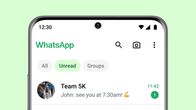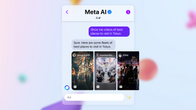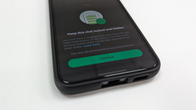What PiP mode means for WhatsApp
To be sure, WhatsApp presently does allow users to use other apps when they are on a video call. However, doing so automatically pauses camera access to WhatsApp, which means that users do not get to use video if they switch to any other app or service — such as responding to an urgent message, or sanctioning entry on your smart home security app’s notifications — when they are in a video call.
All of this is seemingly set to change, which would make WhatsApp video calls work closer to how Apple’s proprietary FaceTime video calling and conferencing app works on iOS. The latter already allows a PiP mode to work in between video calls, which in turn allows users to use other apps and services while within a call itself.
The feature will join a slew of new WhatsApp features, such as the ability for users to join group calls by using a link, adding up to 32 participants in one video call, and the ability to mute or message a participant of a video call, while the call is ongoing. The PiP mode in video calls should further enhance the same.
However, given the feature is still in beta, reports expect it to not roll out until at least early next year — when it is likely to roll out as a stable feature on both Android and iOS.


















